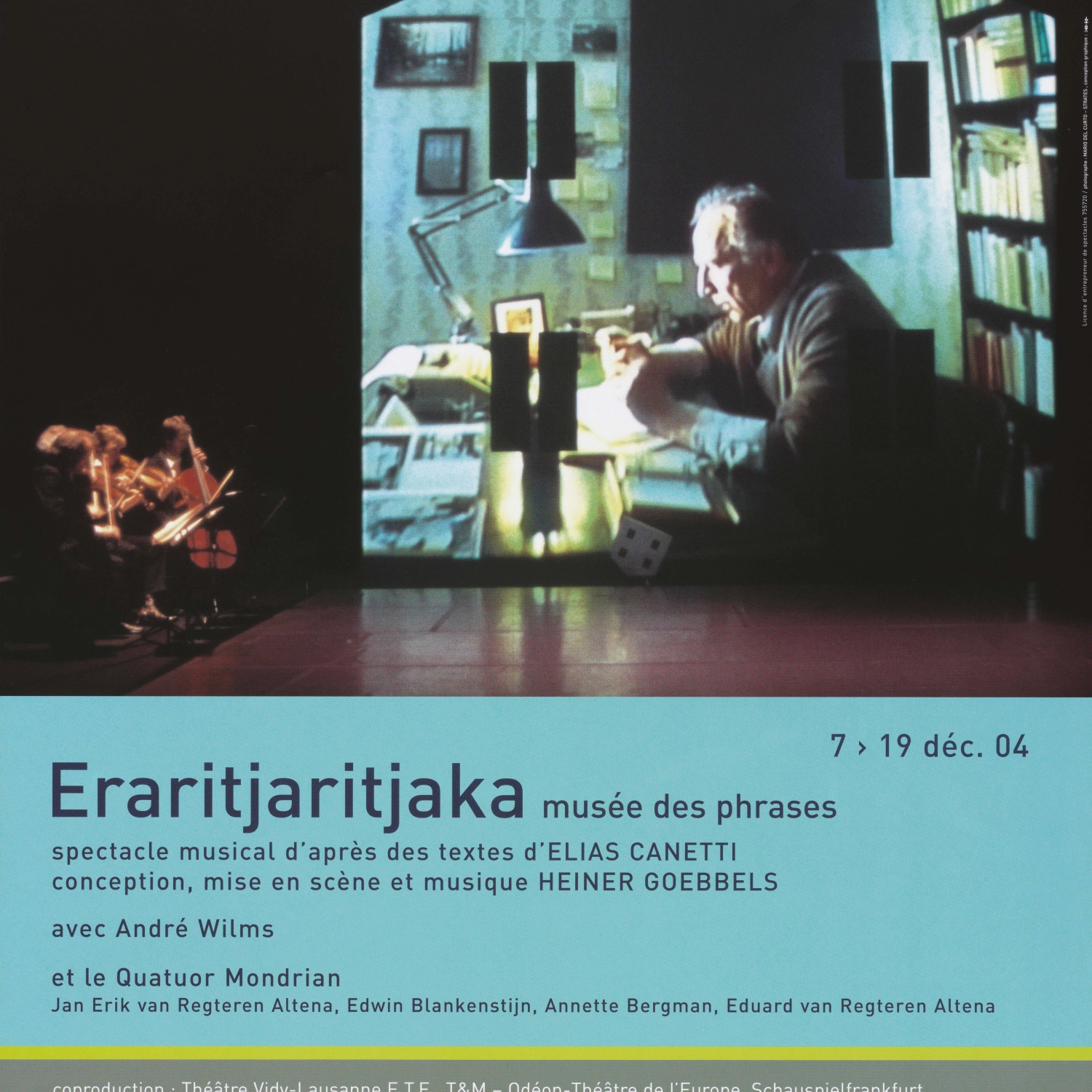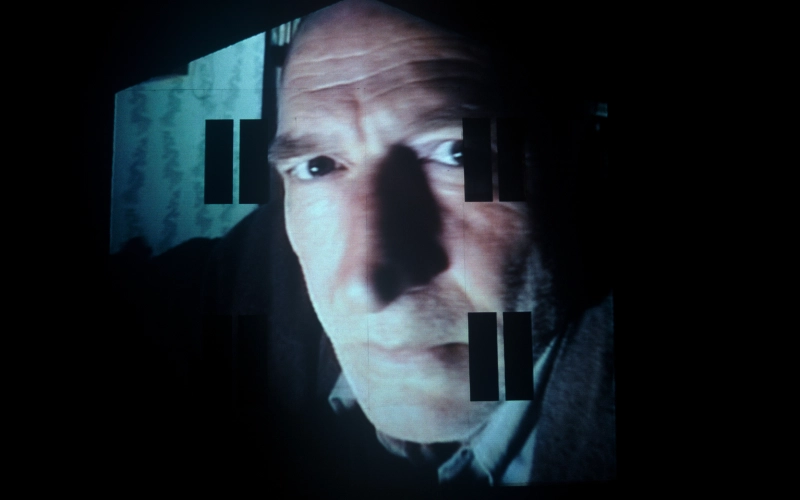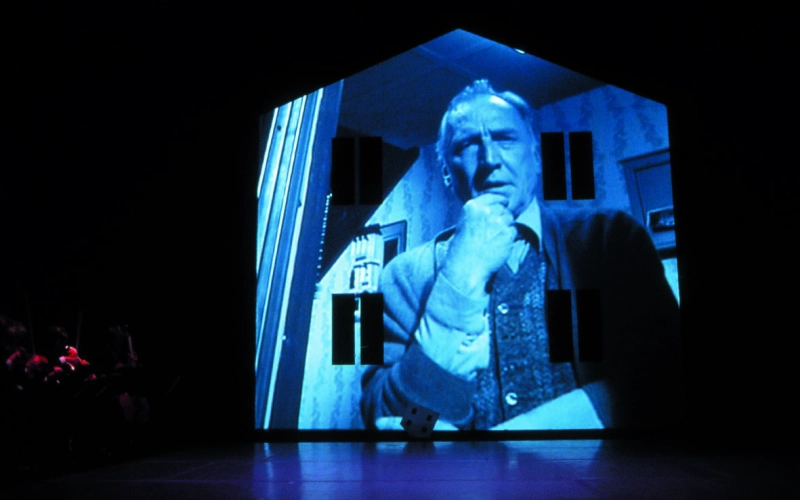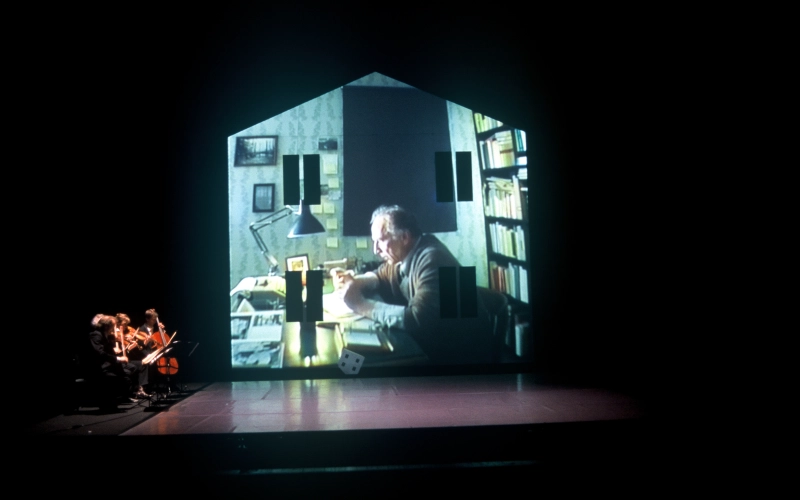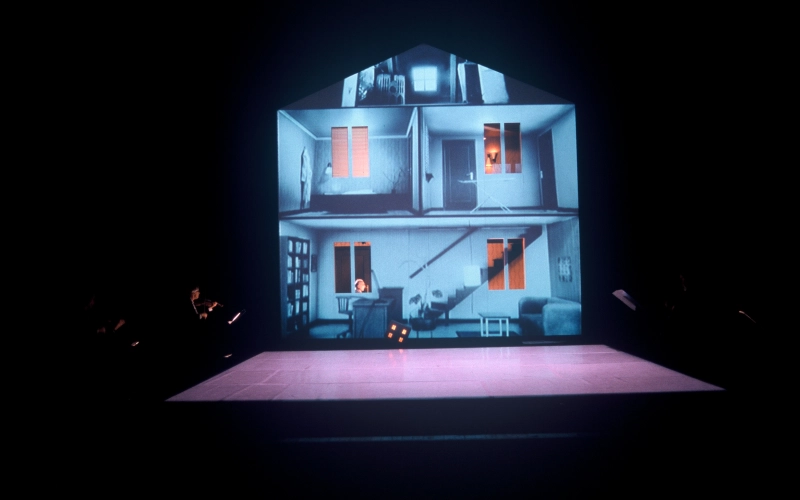Eraritjaritjaka, Museum of Sentences
December 07 2004 to December 19 2004
Berthier grande salle
In 1999 during the Eislermaterial, Odeon audiences discovered the work of Heiner Goebbels, one of the most striking creative forces in contemporary theater. André Wilms is undoubtedly one of the most intense and demanding actors around. Wilms and Goebbels have joined up again to continue an adventure that began in 1993 with Or the Disastrous Landing and continued in 1998 with Max Black. Their latest project is the third and final stop of what appears retrospectively as a voyage of discovery of what is called "human" through 20th Century Europe.
The first step, which introduced France to Goebbels' "musical theater", questioned the massive emergence of the individual, through a confrontation between the individual and the stranger. The second step took on the problem of singularity from another point of view: Similar to a mad alchemist whose gestures and words are captured and broadcast live by an electronic system that crisscrosses the stage, André Wilms, alone on stage, conducted strange experiments and provoked theatrical reactions with the intent of finding the elusive philosopher's stone that would be the invention of the oneself.
According to Goebbels, the different aspects of the "individual" are inseparable from the history of European sensitivity and thought. Or the Disastrous Landing took place in a colonial atmosphere. Max Black took place in France between the two wars. With Eraritjaritjaka (an Australian Aborigine word that more or less describes the feeling of being filled with longing for something lost), Goebbels and Wilms reach the fringes of our time. The tutelary author around whom the show is constructed, and who not only provides the title but also the textual material, is none other than Elias Canetti (Nobel Prize, 1981), whose 100th birthday will be celebrated in 2005. Major thinker, incredible witness, polyglot and cosmopolitan in a Mitteleuropa where he formed friendships with numerous intellectuals, Canetti had to flee the Nazis after the Kristallnacht and take refuge in London. Such a writer was bound to capture the attention of a creative mind such as Goebbels and inspire the third stage of his triptych.
By gathering Canetti's maxims and isolated sentences, the show aims at theatrically translating and sharing his cutting wit. Musically, Canetti's lapidarium (or "sentence museum") with Wilms' gripping performance, takes the form of a string quartet homage-score, that perfect and symbolic style so representative of erudite European music. Using a repertoire that spans the 20th Century (from Ravel to Kurtág), Heiner Goebbels puts together a web of potential relationships (that run from deadly serious to ironic) between Canetti and the music of his century. He ends with this final society described by Canetti set in an unreal coda to the art of Jean-Sébastien Bach's fugues, the perfect illustration of absolute and initial music.
